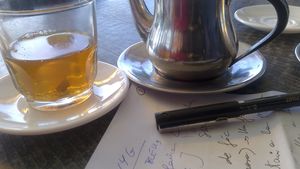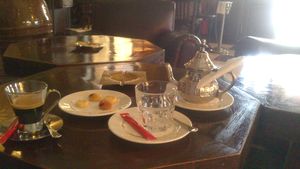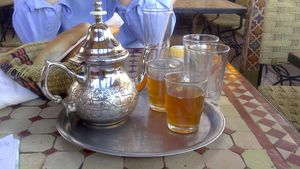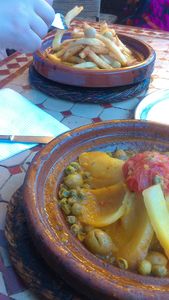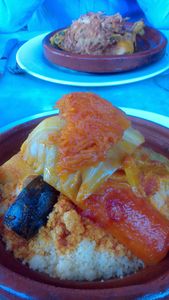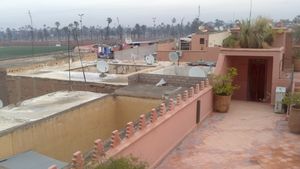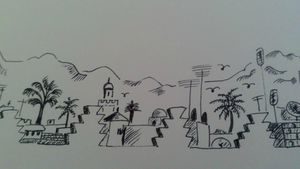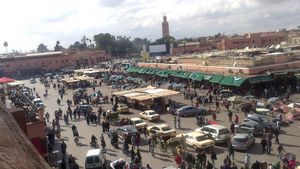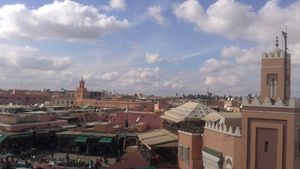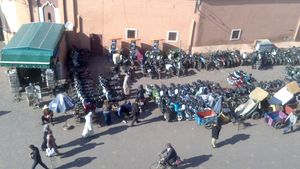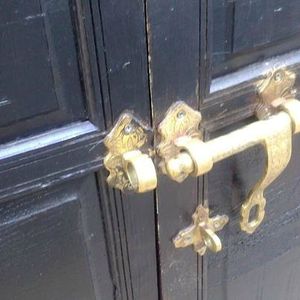Cous cous
Tangia
We followed the advice of Mohamed who helped us a lot, and explained us the tricks and secrets of delicious local gastronomy. What we liked most is Tangia, a local dish from Marrakesh, lamb meat flavoured with saffron and cooked during hours in the ashes of the hammam.
Tangia Marrakchia
http://moroccanfood.about.com/od/beeflambandgoatrecipes/r/Moroccan-Tangia-Marrakchia.htm
Beau détail de la porte
Marrakech, une ville hors du temps...Sans montre, on se laisse aller et on part à l'aventure.
C'est la première fois que nous avons mis le pied sur le sol africain ... Nous avons passé quelques jours en vacances et on a été fascinés... Marcher, sentir, entendre, profiter des couleurs et des achats dans le souk...
Bab
Medina and city walls
The ramparts stretch for some 19 kilometres (12 mi) around the medina of the city.They were built by the Almoravids in the 12th century to fortify the city. Made of a distinct orange-red clay and chalk which gives the city its nickname as the "red city", the walls, which stand up to 19 feet (5.8 m) high, have some 20 gates and 200 towers along it.Bab Agnaou was built in the 12th century in the time of the Almohad dynasty. The name Agnaou, like Gnaoua, in Berber refers to black people (cf. Akal-n-iguinawen - land of the black). The gate was called Bab al Kohl (also referring to black people) or Bab al Qsar (palace gate) in some historical sources. The corner-pieces are decorated with floral decorations extending around a shell. This ornamentation is framed by three panels and on these panels is an inscription from the Quran in Maghribi, foliated Kufic letters, which were also used in Al-Andalus. Bab Agnaou was renovated and its opening reduced in size, during the rule of sultan Mohammed ben Abdallah. Bab Aghmat - Bab Aghmat is located east of the Jewish and Muslim cemeteries, and is near the tomb of Ali ibn Yusuf. Bab Berrima with its "solid towers" stands near the Badi Palace.Bab er Robb (meaning Lord's gate) is a southern gate exit to the city, near Bab Agnaou. Built in the 1100s, it leads to the roads up to the mountain towns of Amizmiz and Asni. Bab Doukkala is located in the northwest portion of Marrakech, is constructed of red brick with double horseshoe arches and saw-like crenellation features.Near it are a synagogue, which had been inside a leper colony, as well as a mosque, which was constructed during the time of Sultan Mawlay al-Ghalib and was commissioned by his mother.Bab el Khémis is one of the city's main gates, situated in the medina's northeastern corner and has a man-made spring.Bab al-Ra'is is located near the grounds of the imperial palace.Bab al-Rubb is located by the city's mellah, in the western portion of the Kasbah.

/https%3A%2F%2Fprofilepics.canalblog.com%2Fprofilepics%2F9%2F7%2F977423.jpg)

